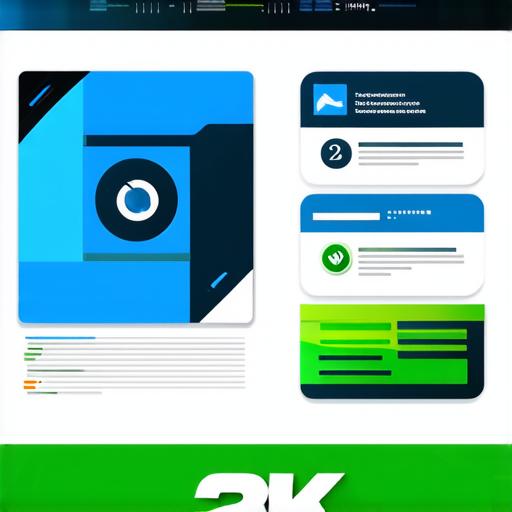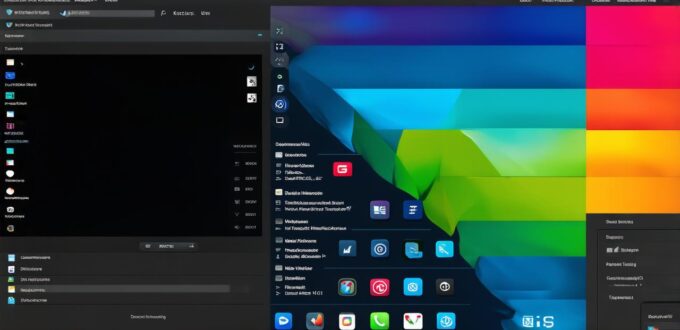Application software is the backbone of modern computing systems. It enables users to perform various tasks and achieve their objectives efficiently. In this article, we will explore 10 examples of application software that have gained immense popularity in recent years, along with their features, benefits, and limitations.
1. Microsoft Office Suite
Microsoft Office Suite is one of the most widely used productivity tools in the world. It includes a range of applications such as Word, Excel, PowerPoint, Outlook, OneDrive, and Teams. These applications help users to create documents, spreadsheets, presentations, send emails, store files, and collaborate with others seamlessly. Microsoft Office Suite is available on Windows, macOS, iOS, and Android platforms.
2. Google Workspace
Google Workspace (formerly G Suite) is another popular productivity tool that offers similar features to Microsoft Office Suite. It includes applications such as Google Docs, Sheets, Slides, Gmail, Drive, and Meet. Google Workspace is available on web browsers and mobile devices. One of the significant advantages of Google Workspace is its seamless integration with other Google services such as Google Maps, Google Ads, and Google Analytics.
3. Adobe Creative Suite
Adobe Creative Suite is a set of software applications that enable users to create and edit multimedia content such as videos, photos, graphics, and 3D models. The suite includes applications such as Photoshop, Illustrator, InDesign, Premiere Pro, After Effects, and Audition. Adobe Creative Suite is available on Windows and macOS platforms.
4. Slack
Slack is a collaboration platform that enables teams to communicate and work together effectively. It offers features such as messaging, file sharing, video conferencing, integration with other applications, and customizable workspaces. Slack is available on web browsers and mobile devices.
5. Trello
Trello is a project management tool that helps users to organize and prioritize tasks, set deadlines, and collaborate with others. It offers features such as boards, lists, cards, checklists, comments, and file attachments. Trello is available on web browsers and mobile devices.
6. Zoom
Zoom is a video conferencing platform that enables users to conduct virtual meetings, webinars, and online classes. It offers features such as screen sharing, recording, chat, breakout rooms, and polls. Zoom is available on web browsers and mobile devices.
7. GitHub
GitHub is a version control system and software development platform that enables developers to collaborate on code, track changes, and manage projects. It offers features such as repository hosting, issue tracking, wikis, pull requests, and continuous integration and deployment. GitHub is available on web browsers and mobile devices.
8. Visual Studio Code
Visual Studio Code is an open-source code editor that supports various programming languages and frameworks. It offers features such as syntax highlighting, debugging, extensions, and built-in terminal. Visual Studio Code is available on Windows, macOS, Linux, and web browsers.
9. Photoshop Express
Photoshop Express is a photo editing application that enables users to enhance their photos, apply filters, adjust colors, and create collages. It is available on web browsers and mobile devices. Photoshop Express is a free version of the popular Photoshop application.
10. Evernote
Evernote is a note-taking application that enables users to capture and organize information such as notes, tasks, reminders, and projects. It offers features such as handwriting recognition, search, and tagging. Evernote is available on web browsers and mobile devices.
Features and Benefits of Application Software
Application software has numerous features and benefits that make it an essential tool for businesses and individuals alike. Some of the key features and benefits include:
- Increased productivity: Application software automates repetitive tasks, streamlines workflow, and enables users to achieve more in less time.
- Improved collaboration: Collaboration tools such as Slack, Trello, and Microsoft Teams enable teams to communicate and work together seamlessly, regardless of their location.
- Enhanced creativity: Creative applications such as Adobe Photoshop and Illustrator provide users with a wide range of tools to unleash their creative potential.
- Data management: Productivity tools such as Microsoft Office Suite and Google Workspace enable users to create, edit, and store documents and files efficiently.
- Cost-effective: Many application software options are available for free or at a low cost, making them accessible to businesses and individuals with limited budgets.
Limitations of Application Software
While application software offers numerous benefits, it also has some limitations that users should be aware of. Some of the key limitations include:

- Dependence on technology: Application software relies heavily on technology, which means that it may not be accessible or functional in areas with limited internet connectivity or power outages.
- Learning curve: Some applications can be complex and require extensive training to master, which can be time-consuming for beginners.
- Security risks: Application software can be vulnerable to security threats such as malware, phishing attacks, and data breaches, which can compromise sensitive information.
- Compatibility issues: Not all applications are compatible with all operating systems or devices, which can limit their usefulness in certain contexts.
How Software Developers Can Leverage Application Software
Software developers can leverage application software to enhance their productivity, streamline their workflow, and improve the quality of their products. Here are some ways that software developers can use application software effectively:
- Collaborate with team members: Collaboration tools such as Slack and Trello enable software developers to communicate and work together seamlessly, regardless of their location. This can help to speed up development times, improve communication, and reduce errors.
- Manage project timelines: Productivity tools such as Microsoft Office Suite and Google Workspace enable software developers to create and manage project timelines effectively. This can help to ensure that projects are completed on time and within budget.
- Use version control systems: Version control systems such as GitHub enable software developers to track changes to their code, collaborate with others, and manage multiple versions of their projects. This can help to reduce errors, improve communication, and make it easier to maintain large-scale projects.
Conclusion
Application software is an essential tool for businesses and individuals. It offers numerous features and benefits that make it an indispensable part of modern computing systems. However, application software also has some limitations that users should be aware of. Software developers can leverage application software to enhance their productivity, streamline their workflow, and improve the quality of their products. By understanding the features, benefits, and limitations of various application software options, software developers can make informed decisions about which tools to use in their daily work.
